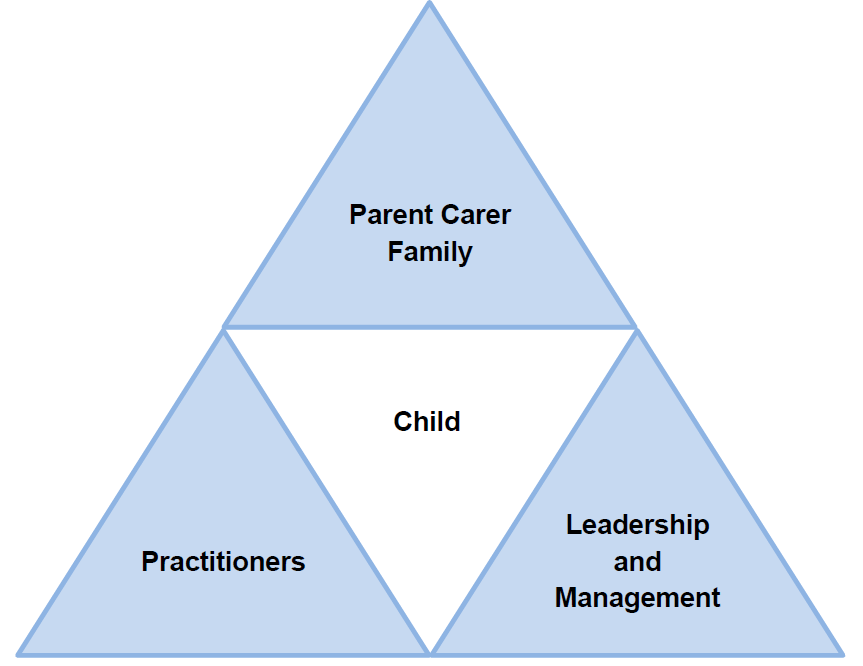Positive relationships form a key foundation to the ethos, curriculum, support, interactions and inclusive practice for all children within early years settings. The child should be centre of this relationship triangle.
To effectively foster positive relationships and effectively meet the child’s needs a clear ethos from management is needed where practitioners supported to understand the important role, they play in developing positive relationships with parents, carers and children, and what this will look like in practice to ensure a genuine partnership where all are viewed as equal.
All practitioners need to understand that all parties have different experiences, knowledge, skills and needs, which will mean that practitioners will need to be sensitive and adjust interactions according to individual needs.

Metaphorical Backpack
Children arrive at your setting with a metaphorical backpack of lived experiences, opportunities, skills and needs, and this will look different for all children, with each child needing to be responded to in a way that takes account of all those elements. For example, one child may have a wealth of experiences, lots of opportunities that have been carefully supported to enable them to develop skills across all developmental areas, and now need supportive setting practitioners to build upon this in partnership with their parents/carers. Another child may have had a similar range of opportunities, experiences and support, but has also experienced adverse childhood experiences which significantly impact how the child interacts with the world and will require sensitive and skilled support to respond to the child and provide support to allow them to navigate the world and reduce the impact these experiences and needs. To build on the backpack metaphor, they not only need support to build upon their previous experiences that are in their backpacks, but they also need support to organise their backpack, get out what they need, pack up what they do not need, and other things.

